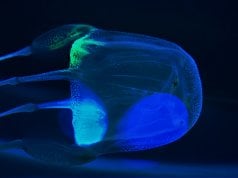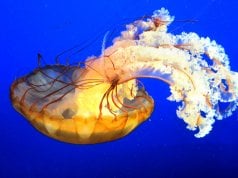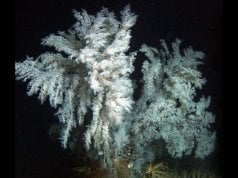A Coral is a unique colonial organism in the taxonomic class Anthozoa. The other members of Anthozoa are the sea anemones.
When you look at a piece of Coral, you are actually looking at hundreds or thousands of tiny individual organisms, known as “polyps.” A wide variety of both hard and soft species exist. Read on to learn about the Coral.
Description of the Coral
These unique creatures come in a variety of shapes, sizes, and colors. Researchers divide them into two groups, hard and soft. Hard species have a tough exoskeleton of calcium carbonate. Contrastingly, soft species have a softer exoskeleton.
The various species range in size drastically. Though the individual organisms measure just a centimeter or so across, the colonial structures reach much larger sizes. Depending on the species, these colonies can exceed 6 ft. tall and 12 ft. across.
Interesting Facts About the Coral
These colonial organisms have a wide variety of unique traits. Learn more about what makes them so interesting, below.
- About Colonial Coral – In a typical colony, the whole organism consists of hundreds, thousands, or even millions of individual polyps. In its creation, a single polyp creates buds or divides asexually. These new polyps are genetic clones of the original polyp.
- Colonies of Colonies – Oftentimes, these colonies form in close proximity to one another. Several different individual colonies, including those of other species, join together and create a Coral
- An Ecosystem in an Animal – These reefs form the basis of entire ecosystems of animals. Within a single Coral reef you can find thousands or millions of fish, crustaceans, and other creatures. These creatures use the reef as their home. They hide from predators and hunt for food in the many different structures of the reef.
- Reef Death – Because so many different animals rely on reefs as an ecosystem and home, their decline causes serious problems. When a Coral reef dies, thousands or millions of other animals suffer as well.
Habitat of the Coral
These creatures form a habitat in themselves. They are sessile creatures. When a new polyp forms, it finds a hard surface to attach to, and divides and branches out from there. Thus, they need only their favored temperature, salinity, and pH, and a hard surface to form on.
Distribution of the Coral
Different species live throughout different regions of the globe. The greatest diversity and volume live in tropical seas near the equator. However, you can also find reefs in temperate seas and closer to the poles, though they grow less frequently. Each individual species has different ranges and distribution.
Diet of the Coral
Different species feed on different items. They are generally omnivores, eating just about anything that they can capture. Some of the species with larger polyps even eat small fish.
The polyps have stinging cells found in all cnidarians, just like jellyfish and sea anemones. When food particles, microorganisms, plankton, and similar small prey come close enough, the polyp shoots a stinging barb into the prey.
Coral and Human Interaction
Human activity has been incredibly damaging to reefs. People directly collect Coral for decorative purposes. Climate change also causes changes in temperature and pH of the oceans, resulting in Coral death and bleaching. Pollution and runoff from fertilizer and pesticides also kill off reefs. Each species faces different levels of threat.
Domestication
Humans have not domesticated this organism in any way.
Does the Coral Make a Good Pet
Generally, these creatures do not make good pets. They live in saltwater environments, and are particularly sensitive to changes in temperature, pH, light, and more.
Coral Care
As discussed above, you must keep all of the individual needs of these organisms steady to keep them alive. Different species need different levels of salinity, temperatures, pH levels, and more. The hard species are harder to keep than the soft species.
Behavior of the Coral
This organism does not have true behavior. Different species have different foraging times and strategies. Many extrude their tentacles at night to capture food particles, while some do so during the daytime. Outside of feeding and spawning, they do not have other behaviors.
Reproduction of the Coral
As we discussed earlier, individual polyps continue to bud or divide to create more clone polyps. Over time, this results in a large colony. However, these organisms also reproduce sexually.
During certain times of year, usually triggered by water temperature or light, the colonies broadcast spawn. This means that they all release their eggs and sperm into the water.
In the water column, the eggs and sperm join, fertilize, and form a tiny larvae. Of the hundreds of thousands of larvae, only a handful survive to reach a rock or similar hard surface and form their own colony.














![Red Angus Closeup of a beautiful Red Angus cowPhoto by: U.S. Department of Agriculture [pubic domain]https://creativecommons.org/licenses/by/2.0/](https://animals.net/wp-content/uploads/2020/03/Red-Angus-4-100x75.jpg)

